PsychNewsDaily Publishers
100 Summit Drive
Burlington, MA, 01803
Telephone: (320) 349-2484
PsychNewsDaily Publishers
100 Summit Drive
Burlington, MA, 01803
Telephone: (320) 349-2484
Board games in the 1970s fostered family bonding, strategic thinking, and created lasting memories through engaging gameplay, making them integral to family life during that era.
If you grew up in the 1970s, you probably remember the thrill of family game night. Back then, board games were a go-to way to spend time together in the living room.
They pulled families closer and made memories that stuck around long after the last piece was packed away.

The 12 board games every ’70s family had offered a mix of fun, challenge, and friendly competition that made those moments special. These games were pretty simple, but they kept everyone entertained—perfect for all ages and especially great for rainy days or sleepovers.

Monopoly probably stands out as the game that dragged on for hours but never seemed to get old. It ruled the board game scene in the 70s, pulling families together around the kitchen table.
You’d buy up properties, collect rent, and cross your fingers you didn’t land in jail. Rolling the dice, trading cards, and the occasional argument over rules? All part of the fun.
Monopoly mixed luck and strategy, so you had to think smart and hope the dice were on your side. A quiet evening could turn into a full-on battle for Boardwalk before you knew it.
Most families kept their Monopoly sets for years. It was more than a game—it was a sneaky way to pick up money skills while having a blast.
Classic versions of Monopoly are still around, which says a lot about its staying power.
Learn more about Monopoly and its place in 70s family life on familygamesquad.com.
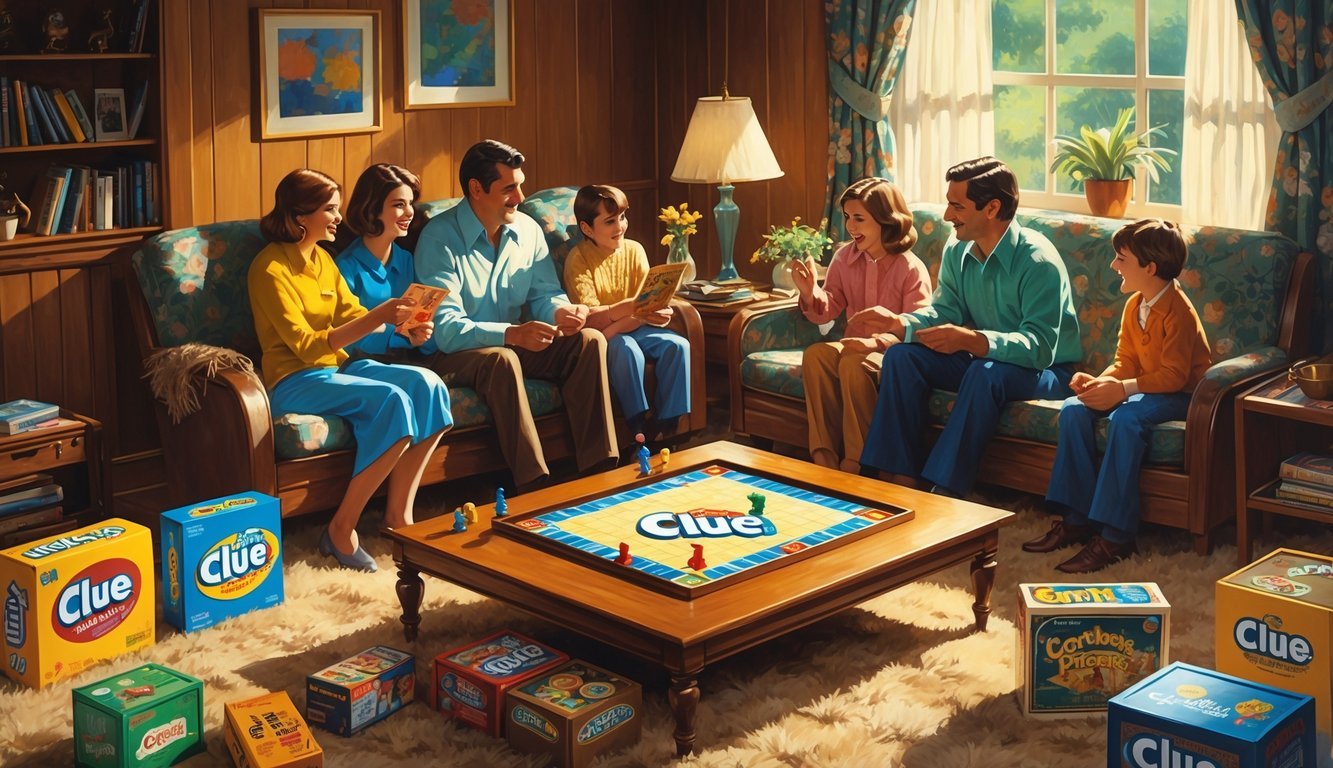
Clue (or Cluedo, if you’re in the UK) was the classic murder mystery game. You’d pick a character and try to solve the crime—who did it, where, and with what weapon.
Players moved around the mansion, picking up clues and crossing off suspects. It was part luck, part clever guessing.
Clue became a must-have in the 70s, and families everywhere played it. Even though new versions came out over the years, the original always seemed to stick around.
You can find more details about the full list of Clue versions at Board-Games.com.
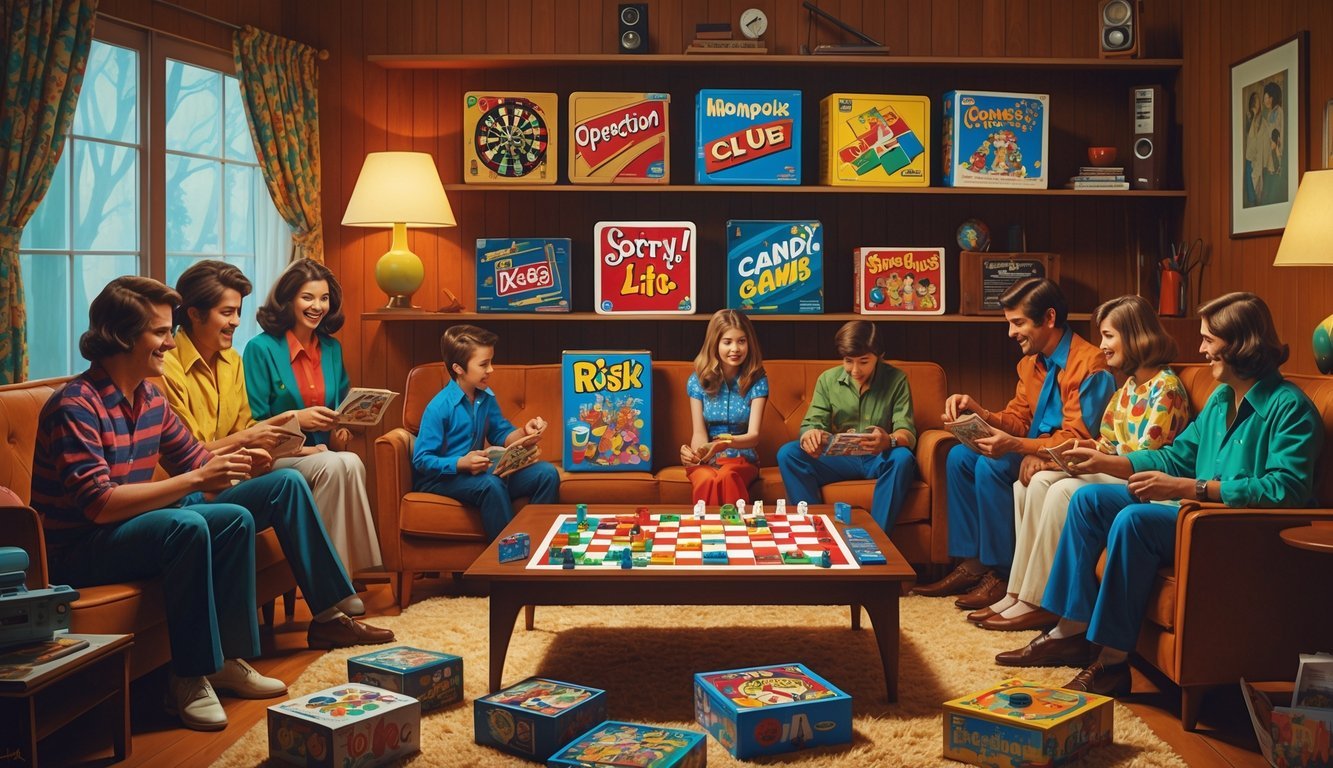
Operation made you focus. The challenge? Pull silly little pieces out of the patient’s body without setting off the buzzer.
You needed steady hands. If those metal tweezers touched the sides, that buzzing sound would make everyone jump.
The game tested your patience and made everyone laugh at the funny names for each part. It was simple, but the tension kept you coming back.
Operation brought out the competitor in everyone. You’d try over and over to beat your own record, hoping not to set off that buzzer.
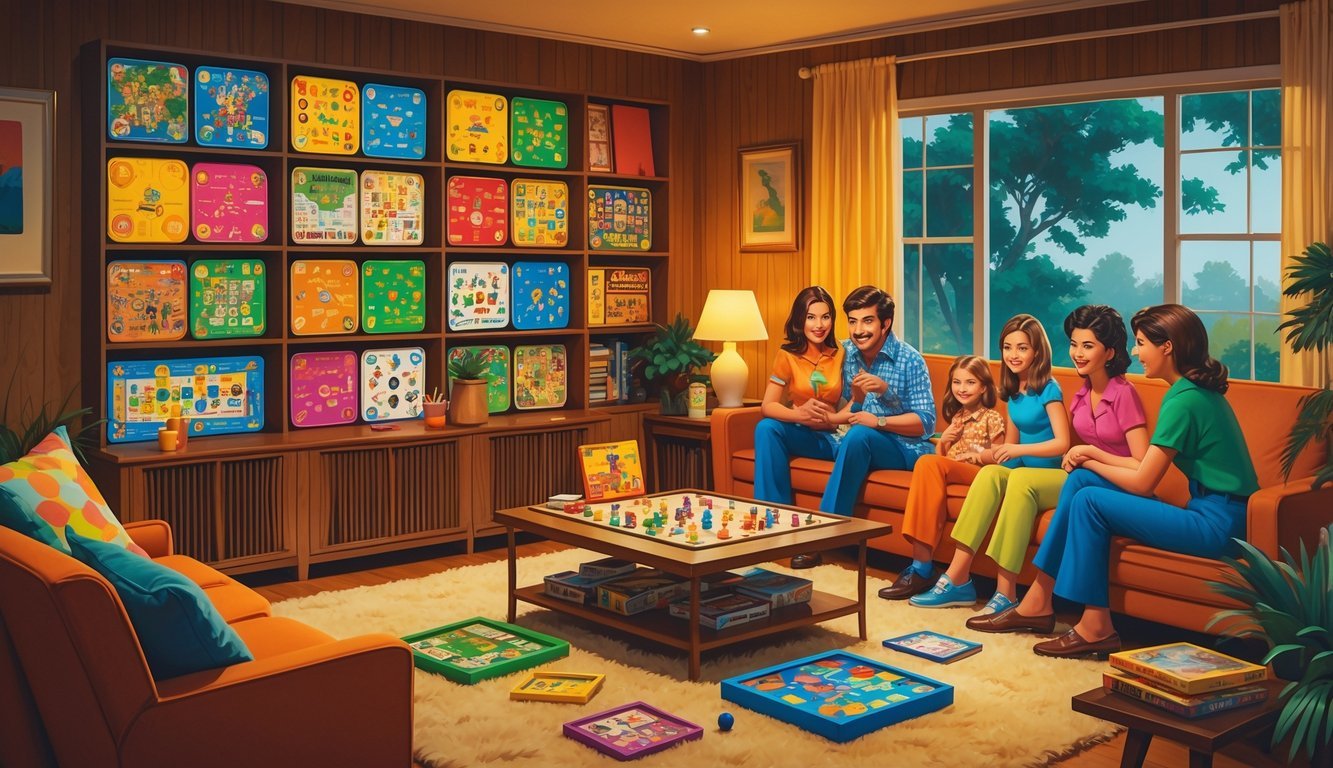
Candy Land is one of those games you probably played as a little kid. It’s bright, colorful, and perfect for anyone who couldn’t read yet.
You didn’t need a strategy—just luck. Drawing cards moved your piece through a world full of candy and sweets.
The game made spending time together easy and fun. Even though it was simple, you learned a bit about chance (and disappointment) along the way.
Most families kept Candy Land on hand for the youngest players. Visiting the ice cream and lollipop lands was a highlight.
Learn more about Candy Land’s classic charm here.
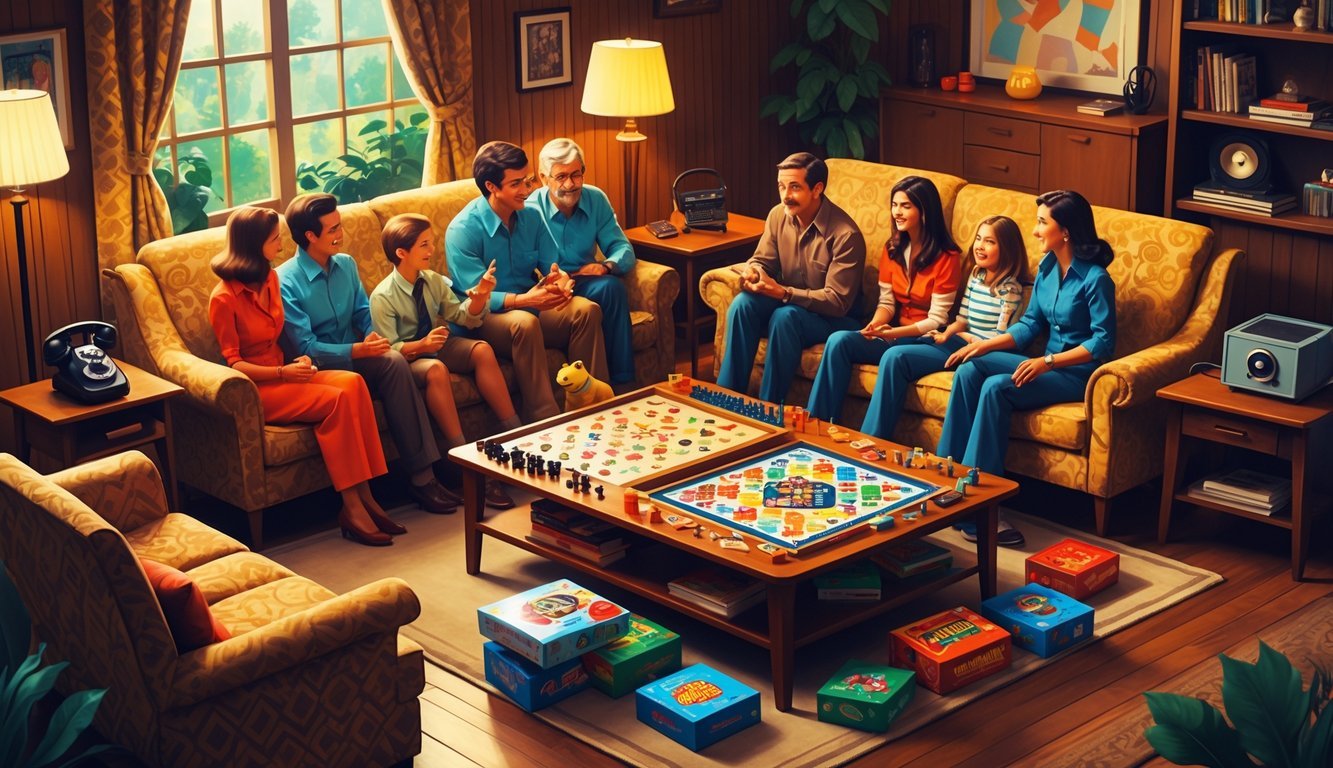
Life let you spin through grown-up choices with a blue or pink peg. You’d decide about college, jobs, and rack up (or lose) money as you went.
The game felt like a lighthearted way to imagine your future. Landing on spaces for buying a house or paying insurance always got a laugh.
Life brought families together around the table. It played out like a mini story you shared, with just enough luck and planning to keep everyone interested.
People still enjoy Life today. There’s something timeless about making big decisions in a board game.
Learn more about Life and other classic board games.

Scrabble showed up on just about every family game shelf in the 70s. It turned your living room into a word-building battleground.
You’d take turns making words with letter tiles, aiming for high scores by grabbing those special squares.
Sometimes, things got heated over what counted as a “real” word or who could score big on the triple-word. Scrabble made growing your vocabulary actually fun.
Playing wasn’t just about winning. You’d share laughs, test your skills, and make memories with family.
For a deeper look at how Scrabble shaped family fun, check out this history of Scrabble from the ’60s and ’70s.
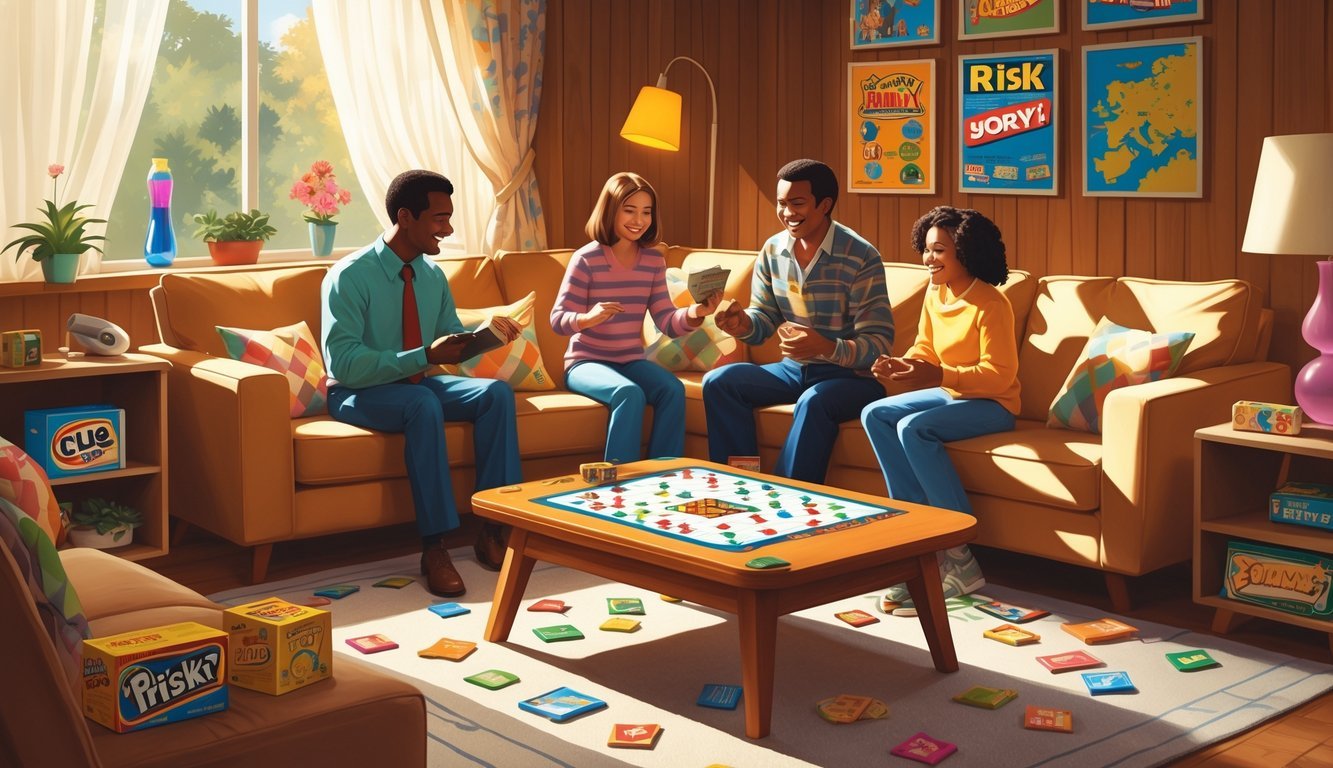
Sorry! was a staple in lots of 70s living rooms. You’d race your pieces around the board and try to bump your opponents back to start.
The rules were easy, so everyone could jump in. It usually led to plenty of laughs and a little friendly payback.
If you liked a mix of luck and a dash of strategy, Sorry! was your game. It made game nights more lively.
You can still find versions of Sorry! that look and play just like the ones from decades ago. For more about this classic, see 1970s board games that remain popular today.
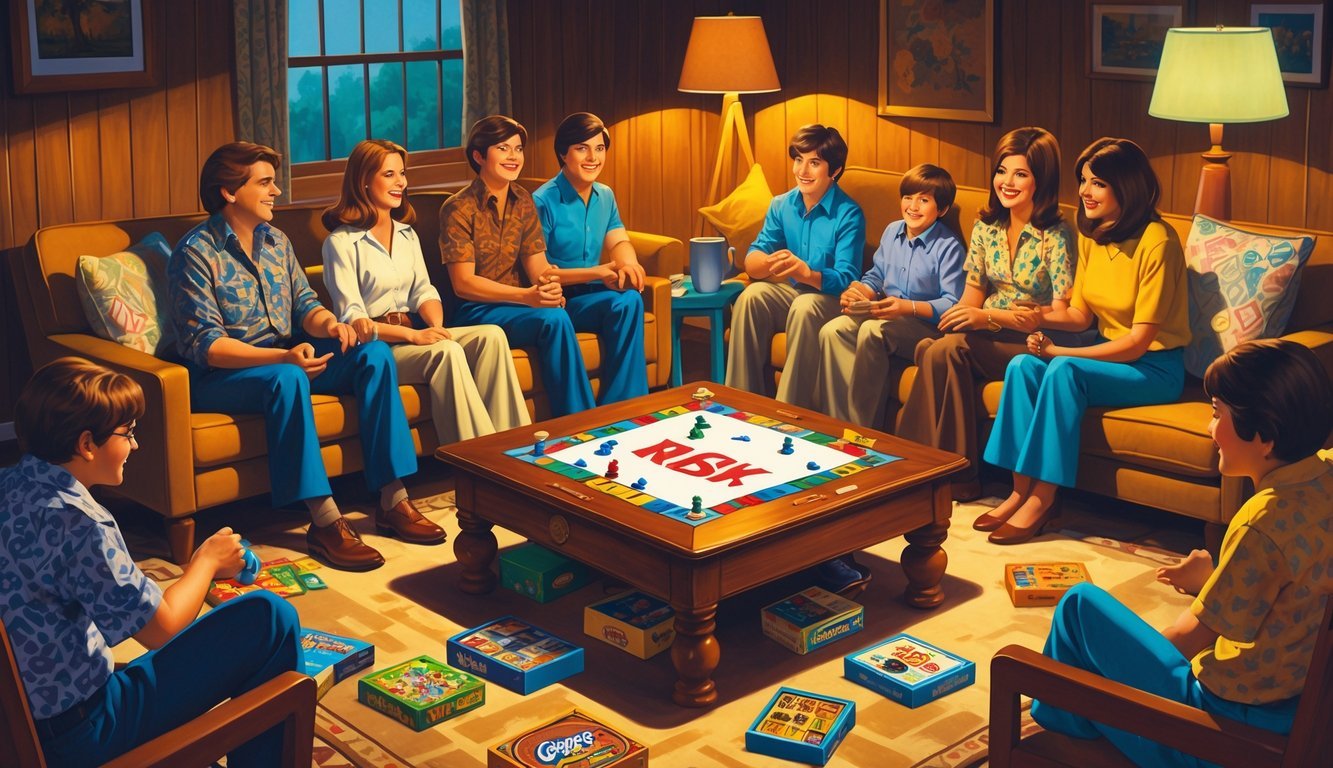
Risk turned family game night into a battle for world domination. You’d command armies, move them across a big map, and try to take over as much as you could.
You had to plan attacks, defend your territories, and sometimes team up with someone—at least until you turned on them. Every game felt different because of all the twists and turns.
Risk taught you patience and how to think ahead. You never knew when a surprise attack would shake things up.
Want to read more about classic games like Risk? Check out 30 Board Games Every ’70s and ’80s Kid Remembers.
Battleship was a go-to for many 70s families. You’d try to guess where your opponent hid their ships on the grid.
Each time you called out a coordinate, everyone held their breath, hoping for a hit. The tension built with every turn.
You didn’t need to be a mastermind to enjoy it. Battleship kept things simple, making it perfect for family nights.
It sparked plenty of laughs and playful rivalry. Even now, people still love playing Battleship, which says a lot about its charm.
For more about classic board games from the 70s, visit 25 Board Games That We All Played in the 1970s.

Trouble stands out for its pop-o-matic bubble. That clicky dice roller made every turn a little more exciting.
You’d race your pieces around the board, trying to get all four home first. And if you landed just right, you could send someone else’s piece all the way back to start.
The design made it a hit with families. Trouble first came out in the mid-60s, but by the 70s, everyone seemed to have a set.
If you want a throwback that’s easy to pick up and keeps everyone involved, Trouble is a solid choice.
For more on Trouble’s history and how it worked, visit the Trouble Board Game article.
Connect Four was simple but addictive. You’d drop colored discs into a grid, just trying to get four in a row before your opponent.
It worked for all ages. You could learn it in minutes and play for hours.
Connect Four came out in 1974 and quickly found a spot in living rooms everywhere. The mix of luck and a bit of planning kept things interesting.
If you want to relive some of that classic fun, Connect Four is always a good pick. Fast, easy, and a little bit competitive.
Find more info on this classic game in the vintage 1974 Connect Four board game.

Mouse Trap put a wild spin on game night. You’d move your mouse pieces around while building a wacky Rube Goldberg-style trap.
Piece by piece, the contraption took shape. When someone triggered it, everyone stopped to watch and either laughed or groaned.
The game was simple, but the moving parts made it different every time. You didn’t just play—you got to see the crazy machine in action.
If you’re after a mix of strategy and fun, Mouse Trap was a top pick for families in the 70s.
Learn more about Mouse Trap here.

Back in the 1970s, board games meant a lot more than just something to do when you were bored. Families used them as a way to spend real time together and keep their minds sharp.
These games shaped the way your family spent evenings and weekends. Sometimes, it almost felt like the whole living room revolved around them.
When you sat down to play a board game in the 70s, you did more than roll dice or move pieces around. You connected with the people you loved.
Games brought everyone to the table, sparking conversations and plenty of laughs. It’s hard to imagine now, but screens barely existed in most homes, so board games really took center stage.
Monopoly, Operation, even something simple like Sorry!—these games gave you a chance to compete, team up, and just be together. Those moments built memories that stuck.
A lot of families used game nights to relax after a long day. Sometimes you’d work together, sometimes you’d battle it out just for fun.
Board games became a fixture in family rooms, part of the routine you could count on.
Board games didn’t just entertain you—they made you think. The most popular games in the 70s pushed you to plan ahead, make choices, and guess what someone else might do.
Monopoly and chess, for example, taught you to manage your money or pieces and think about your next move. Every turn forced you to weigh risks and rewards.
Those moments around the board actually improved your problem-solving skills. You learned patience, too, since you had to wait for your turn and adapt when things changed.
Games mixed luck and strategy, so you also picked up some flexibility. Adjusting your plan on the fly? That was just part of the fun.

It’s funny how board games from the 70s still grab your attention. The colors pop, the look is unique, and they just feel different.
They remind you of time spent with family and friends, not just the game itself. There’s something about picking up an old box that brings back a flood of memories.
Designers kept 70s board games simple, but they knew how to make them stand out. The boxes used bright colors, bold lettering, and clear pictures—nothing too fancy, but you couldn’t miss them on the shelf.
Forget complicated graphics; these games felt friendly and easy to approach. You saw a box, you knew what you were getting.
A lot of the games leaned into strong themes—building empires, solving mysteries—and the illustrations made the story clear right away. That style made it easy to pick a game and jump in.
Boards stayed compact, pieces had their own charm, and the rules didn’t take forever to learn. The focus stayed on having a good time, not trying to memorize a manual.
These games brought families together and created lasting memories. You probably played for hours with your parents or siblings, laughing, competing, and teaming up.
Some games feel like family treasures. They carry stories from your childhood that never really fade.
Maybe now you teach these games to younger family members. There’s something special about sharing those moments and seeing them light up over the same moves you loved.
The real magic isn’t just in the game itself—it’s in the experience and the connection. Taking turns, telling stories, maybe even a little friendly arguing. That’s what sticks.
If you look for collections or friends who still play, you’ll notice the fun and memories just keep going. Honestly, isn’t that the best part?
For more on classic games from the era, see this list of Unmissable 1970s Board Games.